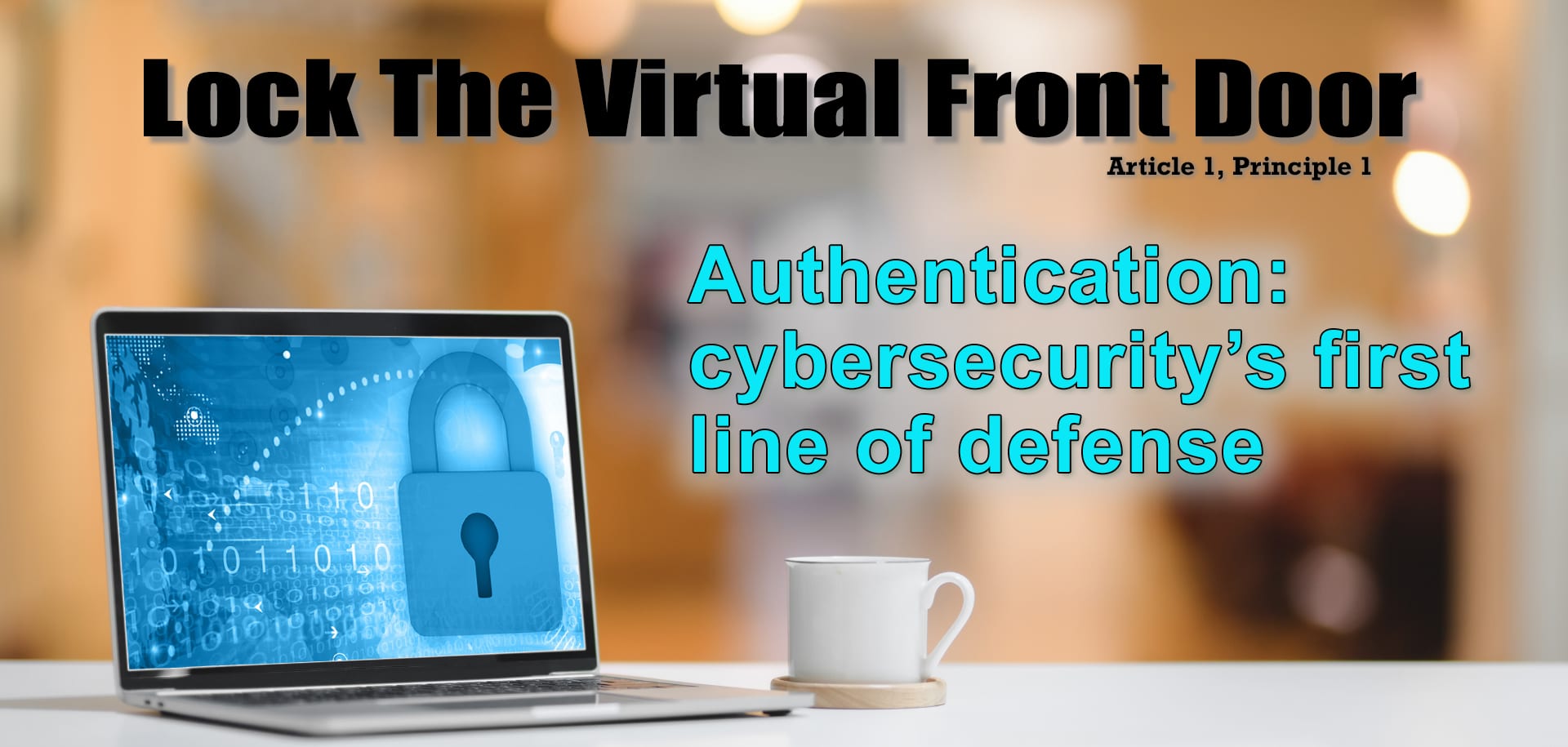Multi-Factor Authentication
Enterprise Password Manager
Safeguard your company’s computers, network and data against hacks, ransomware, and devastating data breaches using the employee ID badge.
Lock the Virtual Front Door is a series of weekly articles on authentication, passwords, data breaches, and other cybersecurity aspects. Business owners need to understand enough about cybersecurity and its technology if they want to support their CISO and IT administrators.
Authentication: Cybersecurity’s First Line of Defense
Cybersecurity’s first line of defense is user authentication. If you fail to secure front end authentication, you can toss the rest of your security out the window. The media blames passwords, but there’s way more to the story. Read this series to discover the facts and the myths.
How Hackers Unlock Your “Secure” Front Door
Passwords are not the problem. Password management is the problem. Find out why current password policies are failing and how to start securing passwords. It might surprise you how convenience plays a big role in security.
Killing passwords won’t help or secure networks
Passwords are not going to die. Deal with it. This article explains why they’re never going away and how to fix cybersecurity’s most ignored weakness. What if you never had to know, remember or type another password? It’s not only possible, it’s crucial.
Weak security boosts high costs
With hackers constantly on the prowl, it’s no wonder that the number one way individuals are exposed to identity theft is through corporate data breaches. Focusing only on back end technology to build a chain of trust can leave a giant hole in the virtual front door. Once the hackers are in, the entire network is vulnerable. And, it’s going to cost you dearly.
Why security can’t kill passwords, dead
Certificates often gets hailed as the holy grail of authentication, while pundits call for killing passwords. This article reveals how an infrastructure around passwords makes them secure. When passwords become as difficult to crack as cypher keys, then passwords will be secure. And a lot less cumbersome and expensive than PKI.
Passwords policies can destroy your network security
IT can inadvertently be their own worst enemy when it comes to password security. Find out why allowing employees to manage their own passwords is dangerous and how a simple change can reduce your risk of a cyber attack by 80%.
Damn it, We’ve got to blame someone!
Who’s to blame for all these cyber attacks? Business owners? Employees? CISOs? Hackers? Rogue nation-states? Or how about software companies who put out products with bugs and vulnerabilities? Prioritizing vulnerabilities can help us stop the cyber attack finger pointing blame game.
Cybersecurity is no laughing matter,
but sometimes it’s so damn funny
From the awkward to the ridiculous, these examples of really bad password management would be funny, if they weren’t true. Generating and managing secure passwords is critical. These examples will show you just how poorly your employees do it.
You Encrypt to Stop Governments,
Not Your Little Sister
Here’s how to make data access both reliable and secure. When you know the four steps to create reliability, you can build an authentication infrastructure that is appropriate to your specific environment. Because you really need to shut the virtual front door!
Symmetric Cyphers and Secret Keys,
Oh My!
Need to explain cyber access authorization and encryption to a non-techie? Like your boss? Or whoever’s in charge of the budget? Get the low down on how cyphers and secret keys work… in plain language. Here’s your opportunity to be their cybersecurity hero! You’re welcome.
What Passwords Can Learn from Symmetric Keys
Passwords and Symmetric Keys are virtually identical in their roles. The main difference is that employees do not generate or manage Keys. This article tells you how you can put a similar (but less expensive) infrastructure around passwords and make them just as secure as Keys. Seriously, check it out!
Asymmetric Ciphers: Two Keys Must Be Better Than One
Asymmetric ciphers create trust. You can trust who the sender is and trust who the receiver is. How the keys are managed and secured builds that trust. Before understanding how an asymmetric cipher can help password security, let’s first review the basics.










